I met Marco Maria Zanin this fall in Sao Paulo, Brazil. This meeting was pretty amaizing as we are born in two Italian cities near to each other. Moreover, long before I had seen his work exhibited in an art fair. His photographic project on the ‘Rural Cathedrals’ was one of the few interesting research that had caught my attention. I kept his brochure taken at the stand with the desire to contact and deepen his work. Instead, as often happens, I forgot. After a long time I get his e-mail asking me to meet in Sao Paulo. Well it was fate. And so it was, and for a few weeks we lived on different floors of the same building in Praça Patriarca. Far from home, we began a beautiful friendship. I learned to respect Marco’s work by climbing the skyscrapers of Sao Paulo, from which he took some great photos of this infernal and magnetic city. Some of these images are now shown in this interview that we publish with great pleasure on Urbanautica. His work on the rural cathedrals expresses with drama the poetry of the Venetian landscape wrapped in its typical winter fog. The same power to interpret the authenticity of a place is found in the Brazilian series, as if he had an ability to breathe the landscape and return it filtered through his own humanity.
In your educational journey you have obtained two humanities degrees. Tell us briefly about your training and how it has influenced your approach to photography and the visual arts. And also how these two diverse ways of viewing things are incorporated into your current research.
Marco Maria Zanin (MZ): «I have always felt the need to get to the bottom of things. My inner restlessness and curiosity about the human universe have been the driving force behind the “sincere search for truth and that which is essential” that has always been part of my artistic path. Always aiming towards, gnothi seauton, know yourself; towards understanding how we function, what moves us, understanding what the mechanisms of the environment that surround us are.
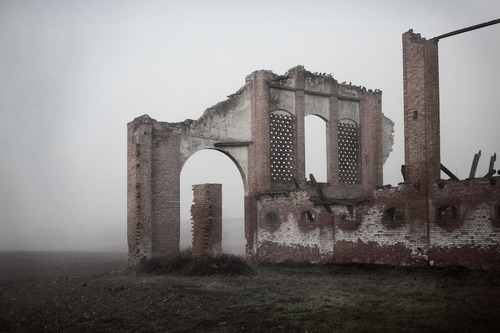
© Marco Maria Zanin from the series 'Rural Cathedrals'
After high school I chose to enrol in literature and philosophy because I felt the need to understand better the spaces and nuances of the human soul, and to understand how it interacts with the historical period in which it lives. With my degree in political science however, I wanted to learn how we build and manage the society which we live in, how thought crystallizes into actions, rules, habits, and so on.
I believe that life and knowledge are two indivisible and interdependent concepts. This allows us to become full and active participants in that which happens around us, helping us to make our choices with wisdom. For me, life and art are also two interdependent concepts. Over time I realized that I no longer wanted to continue my research and transmit its results through academic or other “traditional” means. Often our culture becomes crystallized into roles, categories, and instruments in which its content, with its fresh and vital energy, struggles to come forth and flow. In fact, my job is often oriented towards breaking down these very ‘boundaries’. For this reason I chose art: it is a complete experience, able to touch the deepest chords of the human soul and make them vibrate. Artistic research and production force us to look and listen on a deeper level, as if it were a kind of meditation. It is a deep, authentic, participation with life itself.
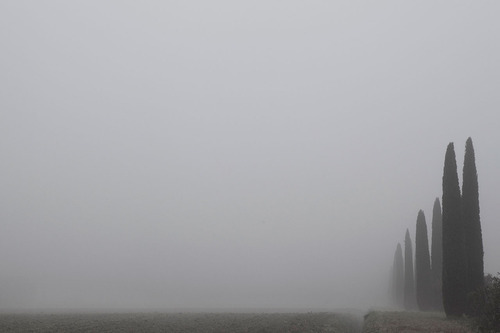
© Marco Maria Zanin from the series 'Rural Cathedrals'
And this is what photography has always represented for me: a way to create empathy with the world surrounding me. A tool capable of creating a link between the inner and outer universes of the human essence. A way to communicate with the Other, that which is different. A way to find common ground beyond differences and separation, which are often only illusions.
This theme of empathy, feeling part of something which is much larger, plays a central role in my research and my way of producing art. It is an essential step for both the knowledge process and life in general, which is ultimately an immense network of relationships. My education and my artistic path walk side by side, sustaining and reinforcing each other. I think an artistic project based, for example, on a solid philosophical or psychological theory is much stronger and incisive than one built just on good intuition. It can reach deeper levels, move much more energy, and fit into a wider space for research and action. I also believe in a multidisciplinary approach. In the future I will definitely propose the use of art in education, and something else I would like to see, also in political planning.
Let’s talk about the landscape. In your work 'Cattedrali Rurali' (Rural Cathedrals), Fortunato D’Amico writes about your ‘commitment to the protection of rural land and towards a society which integrates ethical values in the relationship between man and nature’.
MZ: All of my grandparents were born into farming families, and the values they taught me have always been the guiding light that orients me in this confused period that we are living. My relationship with the earth, with nature, has also always been a constant presence in my life.
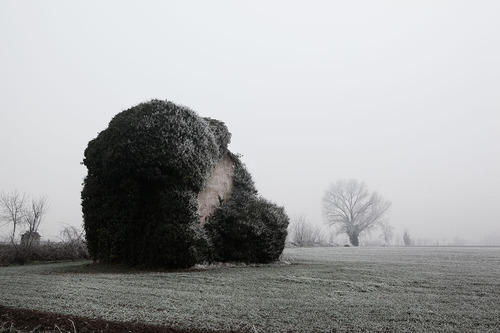
© Marco Maria Zanin from the series 'Rural Cathedrals'
Fortunato D'Amico uses the word “ethics”, a term very dear to me. Modernity seems to have demolished ethics, bringing it towards its opposite, towards relativism. This isn’t a criticism: certain dogmas needed to be broken, and others still need to be broken, but I believe that today there is an urgent need to bring back our horizon of values towards certain constants, some of which universal, in order to find a new balance based on essential and authentic points of reference, in line with new technical, cultural and spiritual achievements which humanity has reached in recent years of radical transformation.
One of these pillars is without doubt the relationship between man and nature. It is not the first time in history that thought and art have forcefully called humanity’s attention to this principle, but it is always very easy to turn away from it, due to its “slowness ”, its variability, and the effort involved in keeping the relationship alive. Yet man and nature are part of a single system, and it is precisely in this relationship where we can find many answers and solutions to the problems of our time.
My work on 'Rural Cathedrals' contains two features that I consider essential for this historic moment. The first concerns ‘what’, that which is the subject: I do not portray, as does much of contemporary photography, the speed, the multiplicity, the extravagance and the strangeness of our time, but instead something that belongs to our roots, our intimate and essential humanity. The humus, the earth. A constant and universal element. I called them cathedrals because these artefacts are the temple, the manifestation of the sacred, innate relationship between man and the earth and nature. They are spaces and forms of the soul, part of us. The second characteristic concerns the how, and it is the way to observe, to be that which surrounds us, listening and experiencing at a profound level everything that happens inside and outside of us, taking all the time we need to do so.
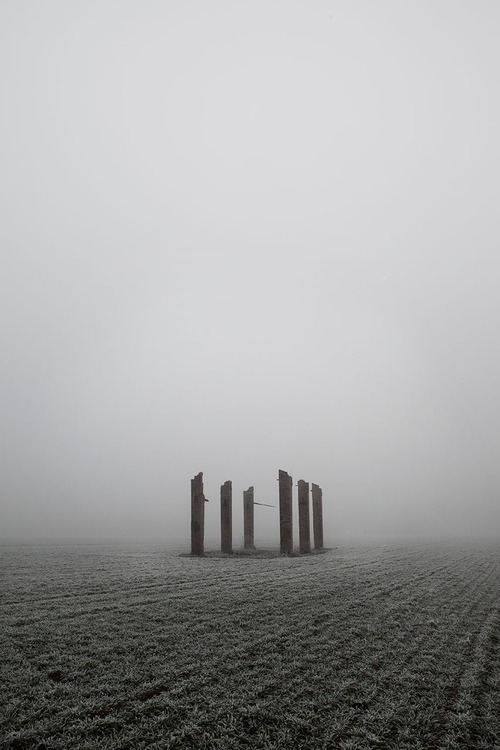
© Marco Maria Zanin from the series 'Rural Cathedrals'
The ‘commitment’ mentioned by Fortunato exists, and for me is contained in the same concept of art, which is present in its social function. Art can, and must, open spaces for reflection, new possibilities, and must contribute to transforming both the individual and the world itself. My hope is that Rural Cathedrals, rural architecture and the landscape of our countryside can emerge into the eyes, minds and hearts of the beholder, to become once more part of our collective imagination, and merge with the best elements that contemporary society has generated.
Your work however is not just an invitation on ‘earthly’ responsibility, but is to seek a poetic landscape, to appreciate silence, to distinguish past values. A positive remedy for the uncertainties of the future?
MZ: This is what I mentioned earlier, with respect to the attitude underlying the work on Rural Cathedrals, the way in which we observe, participating with that which surrounds us. Being is the landscape. And this is the poetry: the ability to find those resonances between the inner and outer universe of he who observes. It has a lot to do with the concept of beauty, of harmony, principles that perhaps the Veneto countryside, with its Venetian Villas, can demonstrate more than any other place in Italy.
This represents values, aspirations to which each human being tends, consciously or unconsciously. Those reference points, those pillars which I have already mentioned are necessary for a healthy and authentic life, lived to the full. Of course, silence is also essential for a deeper listening. We live immersed in noise, which is often the expression of that principle of power and domination that has characterized the last three hundred years of Western history, yet in addition to the positive progress it has brought, it has also brought so much destruction and separation.
Silence leaves space and time to listen to that which is different, to observe it, meet it and understand it. Silence also intended as the silence of the mind, of its own certainties. The poetic experience occurs when you create space, when you allow yourself to be invaded by that which you come across.
The question of past values is always a tricky one, because we live in a culture which throws away, or forgets, or solidifies and labels. What I look for in my relationship with the ancient rural civilization of the Veneto region, or with the civilization of the Venetian Villas, is their live and vibrant content, which is contemporary, in the present, for the present.
These realities are a current and precious reservoir of values, strategies and lessons for the present and the future, which can be applied immediately and in an infinite number of areas. We just have to break down the distance that separates us form them. Furthermore, we need to learn how to observe, to listen to the voices which whisper through those forms which seem voiceless and lifeless.
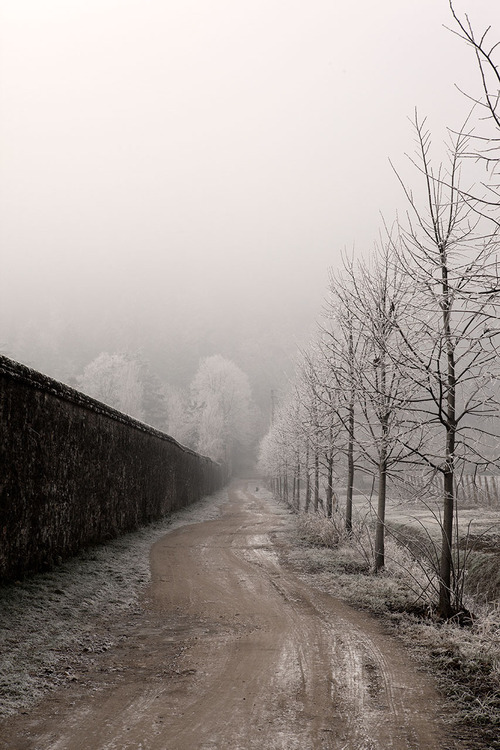
© Marco Maria Zanin from the series 'Rural Cathedrals'
This empathic participation, the poetry of the landscape, is the pathway to reach the awareness that we and the landscape, that we and the Other, are part of a single system. This awareness will also make us comprehend how our actions affect that which we are connected to, and vice versa. As a result it will teach us on a deeper level, how to take care of that which surrounds us And here the circle closes, and we come back to ‘earthly’ responsibilities Also for this reason art and poetry are so important in our lives and in our practical and concrete way of creating society.
You recently worked in the city of Sao Paulo, in a different landscape from that of the countryside. What was that experience like? How did you react to the city, what stimuli and difficulties did you encounter? And what was your work based on?
MZ: Sao Paulo is something almost legendary, archetypal. It is the demonstration of a part of humanity that has emerged in the modern world and which has taken shape in the form of a metropolis; but in a much more radical way than in European cities, which were born from within a classical culture, where a certain sense of proportion and harmony exists.
Sao Paulo has exploded beyond any attempt of urban planning; it is the material translation of the will of power applied to economic development and new technical possibilities that modern day life has made available.
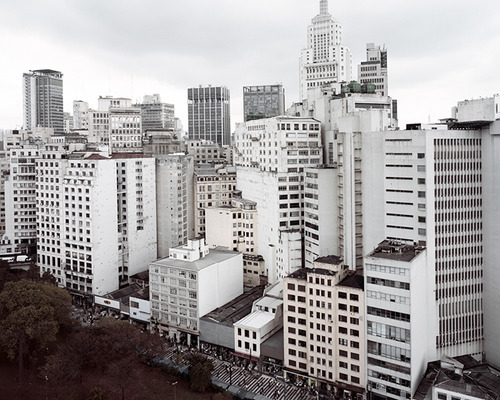
© Marco Maria Zanin from the series 'São Paulo'
In my recent trip to Brazil I wanted to get to know Sao Paulo, a city where I spent just over 48 hours. The impact was like a punch in the stomach, a disorienting experience, but at the same time exciting enough to take your breath away. The city powerfully resonated within a part of me I didn’t know existed. I had to return to the city back at all costs to understand it on a deeper level.
As luck would have it a few days later I listened to the song Sampa, by Caetano Veloso, and I found the perfect translation of my feelings on my impact with the metropolis; and based on this song I wrote ‘Mutantes, the metropolis as an opportunity for growth and transformation’, with which I won an artistic residency at the Residencia Artistica FAAP, working there for two months.
The aim of the project was to decipher the disorienting container which was the metropolis; intended, quoting Baudelaire, as a “forest of symbols”, through photography. To find the heart, the meaning, the human element; to be able to orient oneself within it and feed from its symbolic wealth. The theoretical foundation of the project is centred on the figure of the flaneur, coined by Baudelaire and taken up by Walter Benjamin. The is he who contrasts the frenetic pace of the city with the slow pace of his aimless wandering. He who, thanks to his continuously amazed gaze, breaks the habits and crystallization of the context in which he moves, and who empathizes with its content.
In my period of residence in Sao Paulo I therefore played the role of the flaneur, and used photography as a tool to get in touch with reality, in order to understand it and communicate its meaning. Photography was the method, space and time with which to bring my individual psychological method closer to that of the system of the metropolis, in order to provide a constant flow of content from one system to another without the alienating violence and shocks that the metropolis inflicts on its inhabitants.
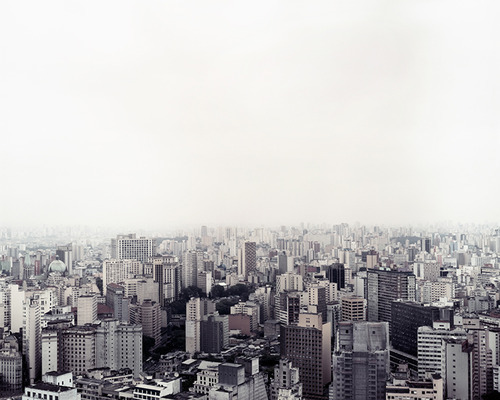
© Marco Maria Zanin from the series 'São Paulo'
There were of course difficulties, both due to the short time I had available and the difficulties of the city itself: Sao Paulo is the translation of those opposing principles to those that I tried to communicate with the Rural Cathedrals: the desire for power, the hectic pace, the nature-less concrete, immediate and superficial relationships, etc. After several attempts that I was not convinced with, I chose to work on aerial views of the city’s architecture. It was my own psychological system and method that prompted me to look from above: to understand the metropolis I had to give it a shape, a face, a boundary for the “great mother.” It was an initial precursory step, towards a deeper understanding. Like studying the appearance of a person, from which you can pick up different aspects of his or her soul.
Next year I will return to San Paolo. In the meantime I will let this first level of knowledge settle and rest, and waiting for my next work, I will take advantage of the time available to deepen my insights with an excellent selection of reading material.
We recently discovered that we share a common interest in the Venetian Villas. Tell us about your new project, and especially the reasons behind it.
MZ: The project “The Venetian Villas in modern times” will be the project that, if the fundraising campaign is successful, I will be working on until next spring, and I am very happy that our artistic paths will cross on such a important issue that is so important to both of us. The Venetian Villas are a unique phenomenon, with an extraordinary wealth of content and, I might add, very important for our times. Perhaps in no other place and at no other time the thought, art, politics and practical work were so intertwined with each other, feeding each other, creating a culture oriented toward harmony and beauty, which was able to live in perfect harmony with nature and landscape.
What other precious vessel of content for our times and the missing yet necessary elements that make up the crisis we are living?
The challenge I set myself was as ambitious as it was necessary. It is the attempt to use art to break the ‘glass case’ which we in modern times tend to use to cover everything that is distant from our values and culture, and which happens often with that which regards our past. I would like to be able to make contact with and transmit the contemporary value contained within the heritage of the Venetian Villas. Through photography, to bring our world closer to that of the great men of the Venetian Republic who designed and built this incredible phenomenon, merging these two horizons of values.
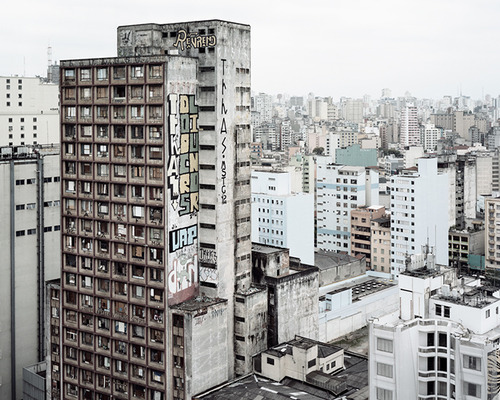
© Marco Maria Zanin from the series 'São Paulo'
Once again, breaking the distance that separates us, the perception of being part of a single system, allowing the flow of content that too often in the way we interact with the past doesn’t occur, preventing us from deeply making it ours, and to integrate it into our horizon in order to build both our present and future choices.
Of course all of this accompanies the need to promote a cultural and artistic heritage that is still little known-of both in Italy and in the world. But it also opens up the question of the relationship between man and nature, man and transcendence, society and landscape. I will focus in bringing out the positive aesthetic and ethical values of the Venetian Villas heritage, but without omitting to tell of the distance between the way of living in that period and that of today, which seems to represent two opposites, and which has turned the Veneto region, and also a great part of Italy, into a concrete jungle surrounding the historical city centres.
It is very important, if you want to usher in a change, to begin to feed collective imagination with new images that activate new scenarios, new strategies. But often it is also necessary, so that they can forcefully reach the deeper layers within us, to provide the strength to break the barriers that we constantly build around us, our habits and crystallization of ideas and concepts. Art is the perfect way to do so.
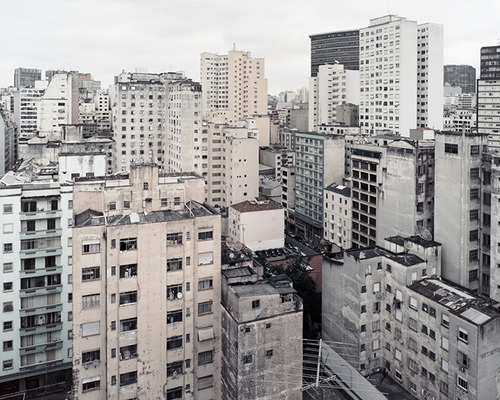
© Marco Maria Zanin from the series 'São Paulo'
Up until now an artistic work on the Venetian Villas, which contains within it an adequate system of guardianship for them, has not been presented or created. I am sure that together, merging together our artistic languages, we will be able to do an excellent job, which will bring a new and precious contribution to our country and territory. I can’t wait!
To support your next project you have decided to use a new and innovative system: Crowd Funding. What is it, and how can we help you?
MZ: Not having any ‘client’ and wanting to create an independent project with a personal slant, I have decided to use Crowd Funding to finance the project on the Venetian Villas. It is a kind of shared funding, which takes place with the presentation of the project using an internet campaign. A budget is set, and whoever wishes to make a contribution may do so, deciding how much to donate, from 1 Euro to 500 Euro or more.
Contributions are made on the trust that is created or can be created by the artist and the ‘financer’, and naturally on the basis of the interest the financer has regarding the project. Furthermore, there are a series of incentives, which vary based on the amount of the contribution. The incentives include a formal thank you published on the internet and social networks, signed photos from the Venetian Villas project, or the artists ‘trials’ on 100% cotton paper, signed and numbered in a limited quantity, a guided visit of the Venetian Villas and finally a photography workshop and a personal portrait by the photographer.
If you wish to know more, and help me to realise the project with your contribution, you can click here. I wish to thank in advance all those who wish to contribute, guaranteeing my best efforts to ensure the aesthetic, but above all ethical value, of this important work.
---
LINKS
Marco Maria Zanin
Italy
share this page
